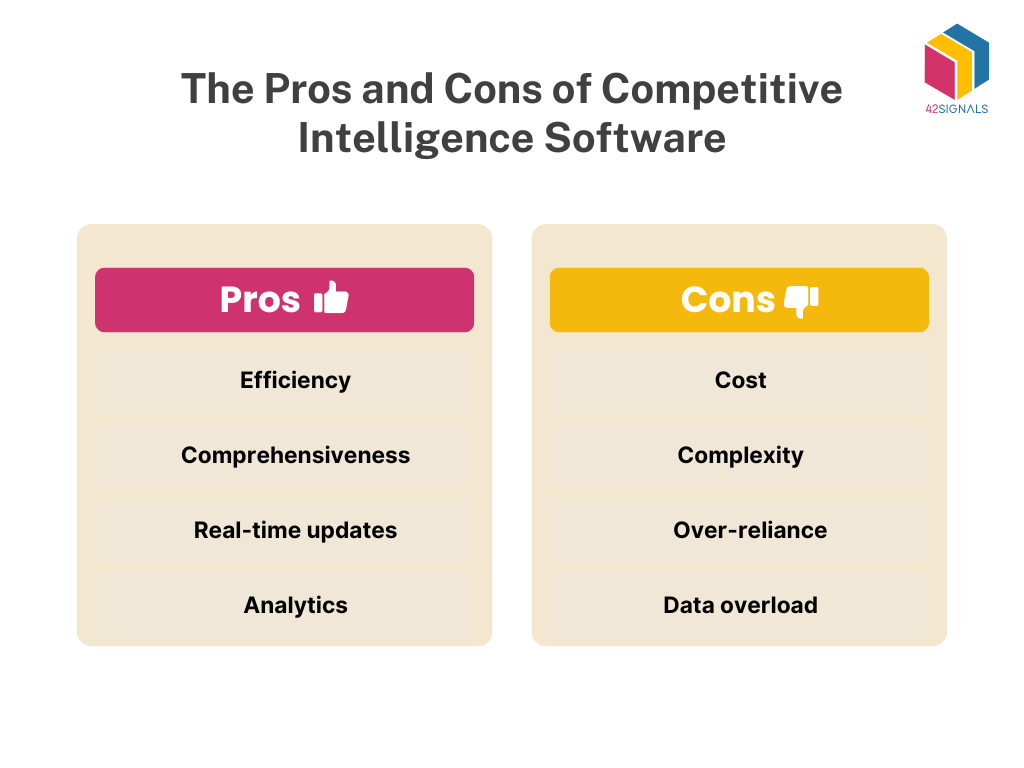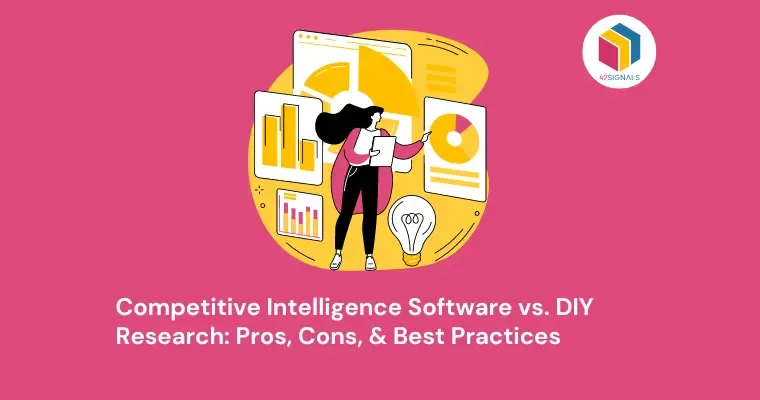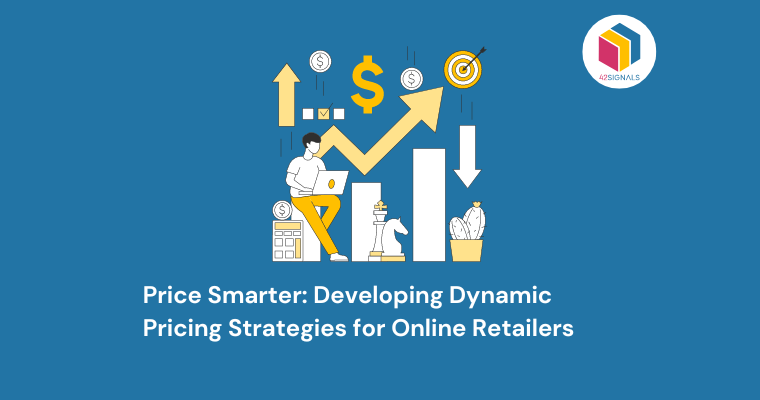Introduction to Competitive Intelligence and DIY Research
Navigating the intricacies of establishing a potent competitive presence and concurrently maximizing operational efficiency presents a common quandary for modern enterprises. Balancing external resources, such as Competitive Intelligence (CI) software, with internal undertakings like Do-It-Yourself (DIY) research holds the key to success.
Amidst countless options and sparse authoritative recommendations, finding the most suitable approach becomes a formidable task. Dive into our detailed exploration of the respective benefits and challenges inherent in each avenue, culminating in a well-informed decision crafted explicitly for your particular setting, financial capacity, and strategic intentions.
Understanding Competitive Intelligence Software
Competitive Intelligence (CI) software is an instrument created for companies to gain a competitive advantage through the collection, examination, and sharing of data related to market patterns, rival firms, and customers. It enables companies to:
- Quickly aggregate relevant data from various sources such as websites, news articles, and social media
- Utilize advanced analytics to spot market patterns, growth opportunities, and competitive threats
- Engage in proactive strategy formulation based on insights derived from data comparison and trend analysis
- Benefit from real-time monitoring of competitors’ activities, thus allowing for rapid response to market changes
- Leverage intuitive dashboards and reporting tools for easy dissemination and interpretation of intelligence among team members
Such abilities enable companies to maintain their competitiveness by making shrewd, informed choices.
The Pros and Cons of Competitive Intelligence Software

Pros:
- Efficiency: Automates data collection, saving time.
- Comprehensiveness: Aggregates information from various sources.
- Real-time updates: Provides timely insights.
- Analytics: Offers advanced analysis for strategic decisions.
Cons:
- Cost: Can be expensive for small businesses.
- Complexity: May require training to use effectively.
- Over-reliance: Risk of neglecting human intuition and insight.
- Data overload: Potential to overwhelm users with information.
The Ins and Outs of DIY Research in Business
Engaging in DIY research arms a business with a nuanced understanding of its market ecosystem. This typically involves:
- Collecting Data: Businesses must gather information from multiple sources, including market analysis reports, customer feedback, and competitive offerings.
- Analyzing Trends: Identifying patterns within the data helps predict future market movements and consumer behavior.
- Benchmarking Performance: Comparing a company’s metrics against competitors highlights areas for improvement.
- Assessing Risks and Opportunities: Weighing potential threats and openings in the market is crucial for strategic planning.
- Implementing Changes: Insights gained from research should propel actionable strategies to enhance the business’s competitive stance.
The practice of conducting independent or DIY research can indeed offer financial benefits; however, it necessitates a considerable investment in terms of both time and specialized skill sets.
Therefore, this approach may be optimally adapted for organizations equipped with sufficient resources to consistently allocate towards rigorous and protracted investigatory pursuits.
Balancing the Advantages and Challenges of DIY Research
Businesses that choose to conduct their own research have the advantage of having full control and the possibility of reducing costs. Nevertheless, this approach requires them to overcome a challenging learning process and invest significant amounts of time. DIY research allows for highly customizable data generation, ensuring that businesses focus exclusively on what they deem most relevant.
- Advantages of DIY Research:
- Cost-effectiveness: Reduced reliance on third-party providers can lead to significant savings.
- Customization: Tailored research parameters to meet specific business needs.
- Direct control: Full control over data collection and analysis process.
- Challenges of DIY Research:
- Time consumption: Significant investment of time for setup and execution.
- Required expertise: In-house skills for effective research may be lacking.
- Potential for bias: Without proper controls, internal research can introduce bias.
Comparing Costs: Software Vs. DIY Approach
Evaluating the expenses of competitive intelligence (CI) software versus a do-it-yourself (DIY) method requires careful consideration of various aspects. CI software usually entails a recurring subscription fee which covers updates, technical assistance, and maintenance. Despite being more pricey initially, this option offers extensive and consistent services.
Alternatively, the do-it-yourself approach might seem cheaper initially; yet, it could eventually end up being pricier due to unforeseen costs like:
- Time spent by employees on research tasks
- Potential missed opportunities due to slower response times
- Resources diverted from core business activities
- The need for training or hiring analysts with specialized skills
These hidden costs suggest that while DIY saves on initial expenses, software could offer a more cost-effective solution over time.
Making the Decision: Factors to Consider for Your Business
When deciding between competitive intelligence software and DIY research for your business, consider the following:
- Budget constraints: Determine how much you can allocate toward these tools or processes.
- In-house expertise: Assess the level of expertise available within your organization to conduct effective research.
- Data needs: Examine the type and volume of data your business requires for informed decision-making.
- Timeframe: Consider how quickly you need insights and whether you can accommodate the time investment required for DIY research.
- Competitive landscape: Evaluate the intensity of competition in your industry and the necessity for real-time competitive intelligence.
- Business goals: Align your choice with the strategic objectives of your business, whether that’s growth, innovation, or market penetration.
- Integration with existing systems: Ensure that the solution can be integrated seamlessly with your existing infrastructure.
- Scalability: Choose an option that can accommodate the growing needs of your business.
Conclusion
Choosing between competitive intelligence software and DIY research hinges on a business’s specific needs, resources, and competencies. Businesses must assess:
- Scalability: Will the solution grow with the business?
- Cost: Is there a clear ROI that justifies the investment?
- Timeliness: How quickly is actionable data required?
- Accuracy: Is the data reliable and error-free?
- Expertise: Does the business have the skill set to interpret the data effectively?
A carefully considered strategic decision demands an optimal balancing of critical factors to guarantee that the adopted approach remains consistent with the organization’s comprehensive aims and resources. This delicate equilibrium ensures that the chosen path not only supports but also enhances the long-term success and sustainability of the enterprise.





